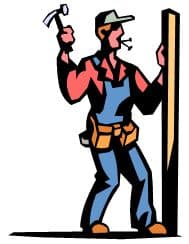Carpenter Job Description Template Word
Are you looking for a comprehensive and customizable carpenter job description template? Look no further than the Carpenter Job Description Template Word from Bizmanualz.
This template is designed to help you create a job description that accurately reflects the duties and responsibilities of a carpenter. It includes sections for job summary, essential duties and responsibilities, qualifications, physical demands, and work environment.
With this template, you can easily tailor the job description to your specific needs and requirements. Whether you’re hiring for a residential or commercial carpentry position, this template can be customized to fit your organization’s unique needs.
Using this template can also help you attract the right candidates for the job. By clearly outlining the job duties and qualifications, you can ensure that only qualified candidates apply for the position.
Overall, the Carpenter Job Description Template Word is an essential tool for any organization looking to hire a carpenter. It’s easy to use, customizable, and can help you find the right candidate for the job.
 CARPENTER SUMMARY OF FUNCTIONS
CARPENTER SUMMARY OF FUNCTIONS
The Carpenter performs both rough and finish carpentry, involving cutting, shaping, planing, and fastening together pieces of wood and other construction materials, such as wallboard, plywood, and insulation.
CARPENTER ESSENTIAL DUTIES AND RESPONSIBILITIES
- Reviews blueprints and project plans detailing the dimensions of the project and materials used.
- Estimates quantities and costs of materials to be ordered for a project.
- Has knowledge of local building codes; complies with regulations in planning and building of structures.
- Constructs and installs temporary structures and supports, including scaffolds for workers to stand on, chutes used as channels for wet concrete, forms for concrete foundations, and timber structures to support machinery.
- Constructs the frame, installs rafters, joists, sub-flooring, wall sheathing, and prefabricated wall panels.
- Installs hardwood flooring, staircases, shelves, cabinets, windows, window and door trim, and other woodwork and hardware.
- Plans how the work will be done using measuring and marking equipment.
- Cuts and shapes building materials using hand and power tools.
- Fastens work together using nails, screws, glue, and staples.
- Verifies work using levels, plumb bobs, rulers, and squares.
- Able to clearly explain steps, provide directions, and answer questions about the construction processes to employees and subcontractors.
ORGANIZATIONAL RELATIONSHIPS
Reports to the Carpentry Supervisor. Provides assistance to and receives support from other Carpenters.
CARPENTER QUALIFICATIONS
A high school diploma or GED is required; a diploma from an accredited trade school is preferred. Carpenters who have been through their apprenticeship will be given preference. This position requires manual dexterity, good eye-hand coordination, and good balance.
CARPENTER PHYSICAL DEMANDS
Ability to communicate orally with project managers and other tradespeople is important. Regular use of a variety of both manual and powered carpentry tools is essential. Standing for extended periods is common. Hearing and vision within normal ranges is important for conversations, to receive ordinary information and to prepare or inspect building plans, blueprints and drawings.
Heavy lifting is expected. Exertion of up to 60 lbs. of force occasionally may be required. Good manual dexterity for the use of common construction equipment, carpentry tools, and scaffolding is required.
Good math and reasoning ability is essential. Able to apply statistical calculations, geometry, trigonometry, algebra, linear equations, and other analytics as required. Able to understand and utilize architectural or engineering drawings and equipment operating manuals to conduct business.
WORK ENVIRONMENT
The job may be performed both indoors and outdoors in a variety of settings including possible hazardous conditions on and around scaffolding or a construction site. Exposure to loud noises, dust, dirt, and smoke may occur. Protective safety clothing is required including appropriate construction grade boots, gloves, hardhat, goggles, pants, and shirt. Activities include extended periods of standing and extensive work with carpentry tools, measuring devices, and motorized or air-powered tools.























Reviews
There are no reviews yet.